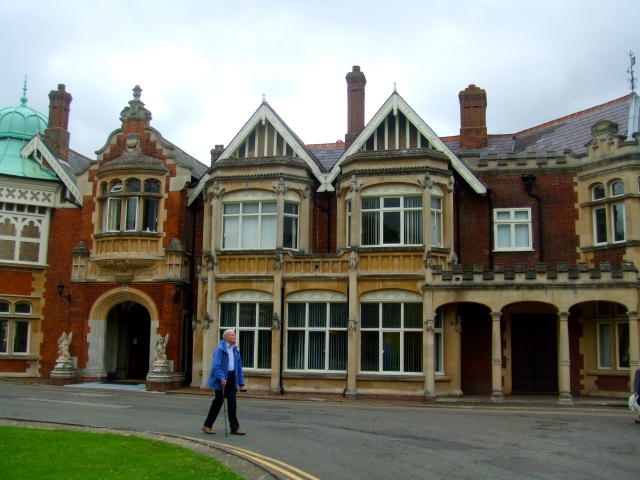
The Mansion, at Bletchley Park, where the WW2 work began. MI6 met here to decide if Bletchley Park would make a good intercepting center during the war.
On Wednesday, we visited Bletchley Park as part of our International Security field trip. Located northwest of London, it’s comprised of a museum, antique toy collection shop/exhibit, and displays of the “codebreaking huts” where Bletchley Park workers operated during World War II.
According to one of the placards, “historians believe the activities at Bletchley Park shortened the war by as much as two years. Without the Bombes, little of this would have been possible.”
The British cryptologists used the Bombe (pictured below) to help decipher German Engima encrypted messages. The Bombe pictured below is a recreated, working model that runs while visitors are present. It is “not a computer because it does not carry out numerical calculations.”
In addition to an exhibit on the Bombe, there were several displays outlining Alan Turing’s work. His essay on mathematical biology, titled “The Chemical Basis of Morphogenesis,” pioneered the field of artificial life along with his computer simulations on biological growth using the Manchester computer. There were several of his other articles on display with a description of how each piece pioneered the fields of computer science, artificial intelligence, and artificial life.
In addition to being an exceptional mathematician, he was employed during the war to work at Bletchley Park as head of the Naval Enigma Team at Hut 8. Turing and Gordan Welchman worked to improve the Polish bomba, the electromechanical machine developed by the Polish, to decipher German encrypted codes. Their work was essential in building the British Bombes to crack the German Enigma. This alone doesn’t begin to explain how important his work was. He developed statistical techniques to optimize the codebreaking process and wrote a couple of essays on this topic while at Bletchley. This work was so important to the British government, that his papers were not released until April 2012. Hopefully this description gives some idea as to how extraordinary of a man Alan Turing was.
But I would be doing a disservice to womankind if I didn’t mention the work of hundreds of women at Bletchley Park during the war. The Bombes couldn’t crack the German Enigma on their own – women were also a part of the code breaking process. In fact, a remarkable TV series started in 2012 outlining the lives of four women who worked at Bletchley Park. The setting takes place after the war when the women have gone home as housewives. Bored and curious about a string of murders in London, they get together again to solve the murder mystery. The show incorporates the codebreaking skills learned by the women and deception used by all parties to the war.
All in all, a fantastic experience. The spying and deception exhibit was extremely interesting. We had an inside look into the life of double (sometimes triple) agents operating during WW2. We also visited an antique toy collection with objects ranging from old sheet music to a collection of doll houses to clothing worn by women during the early 1900s. And a quiet lunch outside by the lake – beautiful! We recommended to our Oxford tour guide to go and visit because the Park is well worth it.
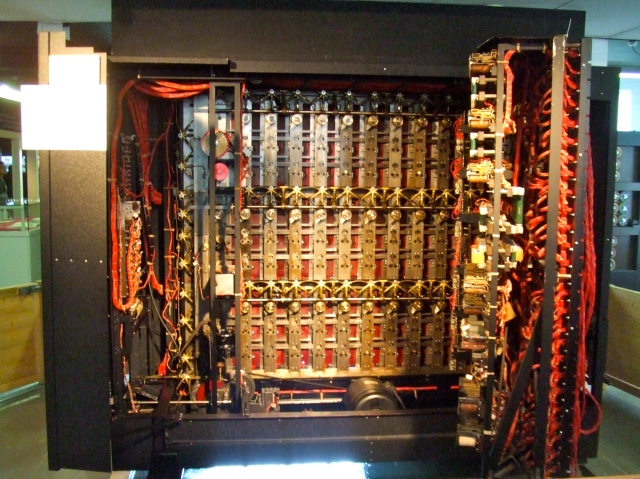
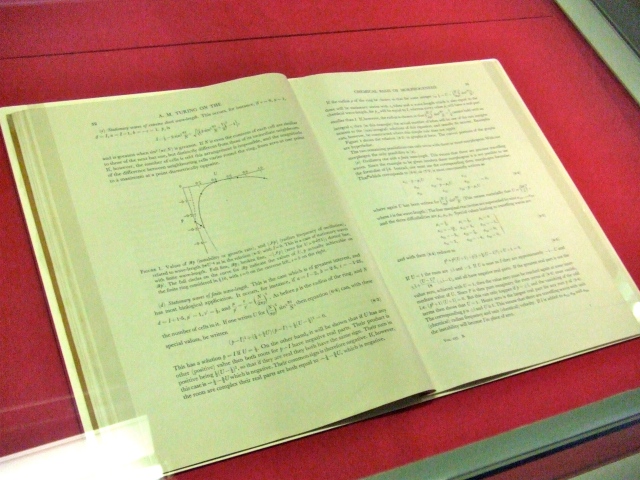
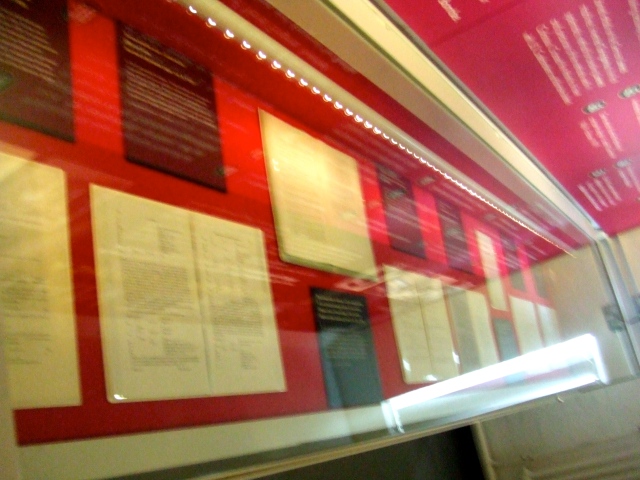
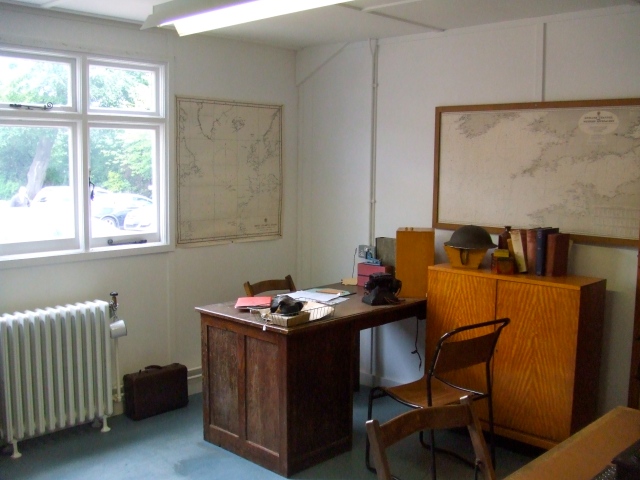
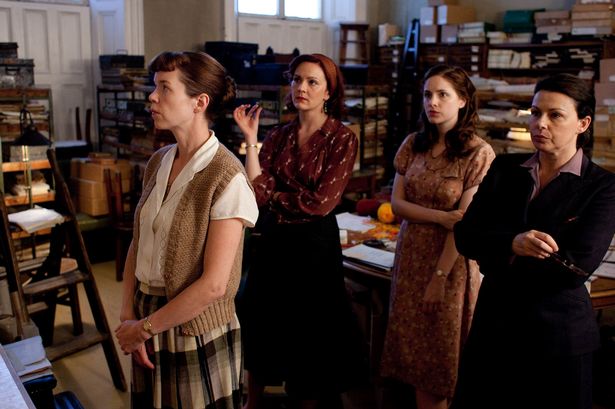
What an eloquent description of what sounds like a fascinating day!
Thank you! It was fascinating. I think I enjoyed the Alan Turing section the most.
For more on the intriguing world of British spy operations during WW 2 I recommend Ben Macintyre’s book, “Agent Zigzag”, the true story of double (perhaps triple) agent Eddie Chapman. Imprisoned by the British on the channel islands when the Germans captured them in 1940, Chapman was released, taken to Germany, and trained as a Nazi spy. The German’s then parachuted Chapman back onto British soil in 1942 believing he would continue to work for the Reich as a mole in British society. However, upon his return to England, he turned himself over to British intelligence who eventually sent him back to across the English channel to spy for the Allies. If you made it up people wouldn’t believe it. Yet, Macintyre does a great job revealing this amazing story and the recently uncovered sources.
Also highly recommended, and of far more significance, is Macintyre’s “Operation Mincemeat”. This non-fiction book displays the bold British gambit of placing a hoard of misinformation into the hands of the Nazi’s in the hope that the German’s would believe in a false operation to invade Greece as a cover for the real Allied invasion of Sicily. The stash of fabricated “secret” documents was placed in a suitcase handcuffed to a dead British civilian dressed as an English flight officer who was then set afloat face down in the Atlantic off the coast of Spain. These bogus documents, obtained by German spies in Spain, eventually made their way up the Nazi command structure and were viewed and believed by the Fuhrer himself who deployed a dozen divisions to defend Greece against an Allied invasion that never came, diverting them away from Operation Husky in 1943. This operation was also retold in the 1956 movie, “The Man Who Never Was”.
PS- British WW 2 spy Ian Fleming continues a legacy of British black-ops into our own day as the author behind the James Bond franchise.
Thank you for the response! I’ll try to get my hands on The Man Who Never Was because after reading the placards on spying and deception, I wanted to know more but am not sure I’ll have enough time to read books on it this summer.
PPS- why do I use possessives instead of plurals? It’s a secret.